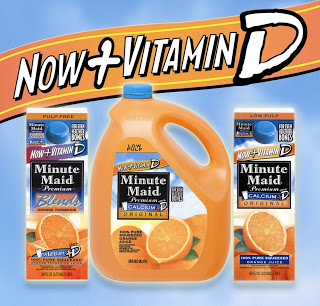1. The terms “vitamin D2” and “vitamin D3” do not refer to the hydroxylation status of vitamin D–either D2 or D3 can exist in the (1,25-OH), (25-OH), and unhydroxylated varieties–rather, they refer to whether or not the vitamin D derives from animal (D3, also called cholecalciferol) or plant (D2, also called ergocalciferol).
2. Ergocalciferol (Vit D2) is the least expensive, is the type of vitamin D with which milk is fortified, and can be given in large enough oral doses to correct vitamin D deficiency relatively rapidly (e.g., 50000 units of ergocalciferol po qweek x 12 weeks).
3. Cholecalciferol (Vit D3) is better absorbed orally than Vit D2, but is not available as a high dose form like D2 (e.g., 400-800 units po qd of cholecalciferol).
4. Calcitriol refers to the activated form of vitamin D, which is hydroxylated at both the (1) and (25) positions, and may be either D2 or D3; the medication calcitriol is the D3 form.
5. Cholecalciferol (VitD3) is produced in the human skin in response to UV light and is initially unhydroxylated at both the (1) and (25) position. Hydroxylation occurs at the (25) position in the liver (an efficient process which generally occurs even in the setting of advanced liver disease) and occurs at the (1) position in the kidney.
6. Paricalcitol (Zemplar) is a vitamin D2 analogue which is hydroxylated at both (1) and (25) positions.
7. doxercalciferol (Hectorol) is another vitamin D2 analogue which is hydroxylated only at the (1) position.




Hi,
Not really related to this topic,but is anyone aware of any evidence out there linking Vitamin d(D2 or D3) to the formation of kidney stones?
Anything other than the WHI study?
Hi,
Fluwikie.com is in the progress of choosing some of the top blogs(which have adequate information) to receive recognition from Fluwikie.com as a Featured Blogger. This award is not meant to be anything other than a recognition that your blog gives adequate information about tactics that directly or in directly raise disease awareness and prevent the transmission of Disease. Simply place the award banner code on your site and your blog will be listed as a Featured Blogger on Fluwikie.com. Flu Wikie is a Private Global Health Watch Group. Whose goal is to promote healthy living though the spread of FREE information globally. Thank you for your time and dedication to your blog!
Fluwikie.com is awarding you as top resource and if you would like to get the banner, please email me back with the subject line as your URL to avoid Spam and also to make sure that you only get the banner.
Theoritically Vitamin D2 or D3 should not be effective in patients with ESRD/CKD as they do not have the 1 hydroxylation. Then how come some PCPs use D2 as a supplement in ESRD patients?
According to my Endocrinology Fellow friend, vitamin D1 is a 1:1 mixture of ergocalciferol (D2) and lumisterol. As best I can tell this was a synthetic “early generation” attempt at supplementing the diet with vitamin D which is no longer used.
Thanks for explaining! Never knew about the D2/D3 thing. Does a vit D1 exist as well?